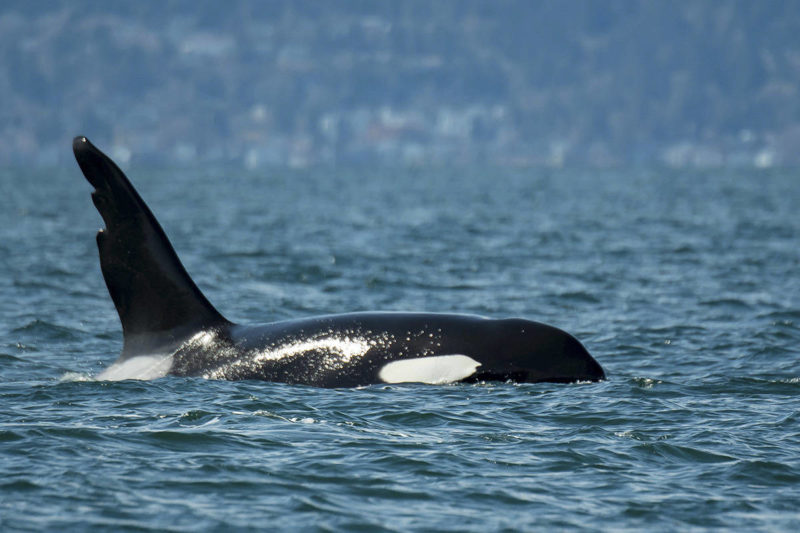Whale watchers cruising off Greater Victoria on March 29 were lucky enough to spot a rarely seen male orca named Chainsaw who, with his jagged dorsal fin, is easily distinguishable from others.
Researchers don’t know for certain what put several notches in the top of his fin, but they guess the missing chunks could have been caused by a seal or sea lion preying on Chainsaw in his youth.
Chainsaw was swimming north through the Haro Strait, between the Saanich Peninsula and the San Juan Islands. He was with a group of about 10 of the West Coast transients, commonly known as Bigg’s killer whales. The orcas, distinct from the Southern Residents due to their transient nature and appetite for larger prey, are named after the late Canadian scientist Michael Bigg. Bigg was the first to discover that orcas can be individually identified based off small physical differences, allowing scientists to study orcas’ social relationships and travel patterns.
READ MORE: Whale Trail helps a Prairie girl spot whales from shore
“It was a beautiful day on the water to watch whales,” said Sara McCullagh, captain of the Sea Lion, “and it’s always fun to see Chainsaw. He’s a bucket-list animal for a lot of us in the whale watching community.”
Chainsaw is believed to have been born in 1978 and, when spotted, is often with his mother, Whidbey II. He has been reported to travel up the coast of Canada, as far as southeast Alaska where he’s known as Zorro to whale researchers and naturalists.
Unlike Southern Resident orcas who are dying off due to a short supply of chinook salmon, Bigg’s orcas are increasing in numbers. There is an abundance of their preferred prey of seals and sea lions.
READ MORE: Killer whales come close to shore in Nanaimo wild-coast spectacle
Plan your future adventures throughout the West Coast at westcoasttraveller.com and follow us on Facebook and Instagram @thewestcoasttraveller. And for the top West Coast Travel stories of the week delivered right to your inbox, sign up for our weekly Armchair Traveller newsletter!











 VIDEO: Rare white ‘spirit moose’ spotted in Cariboo
VIDEO: Rare white ‘spirit moose’ spotted in Cariboo